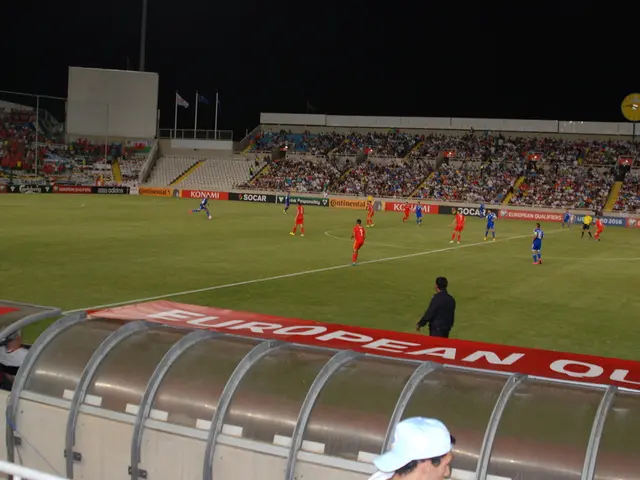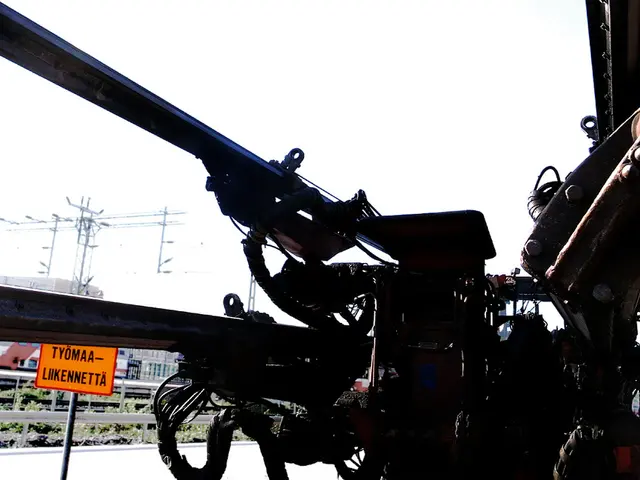Mastering Flight's Three Key Components: Roll, Pitch, and Yaw - The Flights Axis Triad
Airplane acrobatics, anyone? Sure, let's dive into the art of defying gravity and performing mesmerizing maneuvers. The secret to this dance in the skies is all about mastering roll, pitch, yaw - the three planes of motion that make airplanes look like graceful eagles in flight!
Tilting with the Roll
Think of an eagle effortlessly banking and rolling as it soars through the sky. That, my friend, is roll! This movement occurs along the longitudinal axis, basically tilt the wings from a level flight position to a banked one. By banking, the aircraft changes direction, enabling it to turn while maintaining lift. The cool thing about roll is that it's controlled by the ailerons - sneaky, hinged flaps located on the trailing edge of each wing. By moving the ailerons in opposite directions, one lifts while the other lowers, creating an imbalance in lift between the wings. This differential lift causes the airplane to roll and make a dazzling turn.
Ups and Downs with the Pitch
Imagine a teeter-totter tilted to one side. That's pitch! Remember, you control pitch using the elevators, those cleverly designed hinged flaps on the horizontal stabilizer (the tailplane). By moving the elevators up or down, you alter the angle of attack of the wings, affecting the amount of lift generated. Lifting the elevators boosts the angle of attack, producing more lift and launching the airplane skyward. Conversely, lowering the elevators reduces lift and initiates a descent.
Yawing like a Swaying Tree
Yawning? Nope, we're talking about yaw here! This movement is similar to nodding your head from side to side. It's the rotation of an aircraft around its vertical axis, swinging the nose left or right. This movement is like steering a boat. The control surface in charge of yaw is the rudder, found on the vertical stabilizer (the fin). By moving the rudder left or right, the pilot disrupts the airflow over the vertical stabilizer, causing the aircraft to yaw in the opposite direction. While yawing doesn't directly affect altitude, it plays a crucial role in coordinated turns. By using the rudder in tandem with the ailerons, the pilot ensures the aircraft turns smoothly without skidding or slipping.
Flight with Finesse: The Balancing Act
An airplane doesn't zoom through the sky solo; these rotations are often combined to achieve specific maneuvers. For instance, a coordinated turn calls for a combination of roll and pitch. The pilot uses the ailerons to bank the aircraft, then adjusts the elevators to maintain altitude throughout the turn. Similarly, yaw with smooth aileron input helps fine-tune the direction during a turn, preventing flourishes or swerving.
Taking Flight: The Formula for Success
So, grasping the concept of roll, pitch, and yaw opens the door to a deeper appreciation of the amazing science and skill involved in flying. Whether you're an aspiring pilot or an aviation enthusiast, this knowledge will unlock a new dimension of awe for the world above!
Now, check out this figure to see where the significant components of an aircraft are located:
Airforce anarchy
Roll, pitch, and yaw are the building blocks for effective flight control. Each of these movements plays a unique role in allowing pilots to weave gracefully through the skies.
Roll: Banking for Turns
- Definition: Movement around the longitudinal axis, which runs from the nose to the tail of the aircraft.
- Control Mechanism: Controlled by the ailerons, hinged flaps located on the trailing edges of the wings.
- Effect: Essential for turning; it changes direction, allowing planes to make lateral adjustments during flight.
Pitch: Ascending High and Descending Low
- Definition: Movement around the lateral axis, which runs from one wingtip to the other.
- Control Mechanism: Controlled by the elevators, hinged flaps on the tail section of the aircraft.
- Effect: Determines the aircraft's climb or descent; by adjusting pitch, pilots can control airspeed and altitude during various phases of flight.
Yaw: Steering with Style
- Definition: Movement around the vertical axis, which runs from the top to the bottom of the aircraft.
- Control Mechanism: Controlled by the rudder, located at the rear of the vertical stabilizer.
- Effect: Crucial for maintaining directional control; helps in aligning the aircraft during turns and correcting deviations from the intended path.
Coordinating these movements is an essential skill for pilots to achieve smooth and precise control of the aircraft. For example, during a turn, roll is used to initiate the turn, pitch is adjusted to maintain altitude, and yaw is utilized to keep the plane on track.
Resources for In-Depth Learning:
- FAA Airplane Flying Handbook: A collection of detailed explanations about aircraft movements and control techniques.
- Aircraft Spruce & Specialty Co.: Offers resources and materials for aircraft maintenance and operation.
- Khan Academy Videos: Educational videos covering principles of flight and aircraft control.
These resources will provide a comprehensive understanding of how roll, pitch, and yaw movements are crucial for aircraft control and maneuvering. Happy flying, futureTop Gun!
Mastering roll, pitch, and yaw is instrumental for pilots to perform mesmerizing maneuvers within the realm of science and technology, much like an artist applies brush strokes in sports. Roll, or the movement along the longitudinal axis, is controlled by the ailerons, enabling aircraft to change direction during flight. Pitch, controlled by the elevators, determines the aircraft’s climb or descent and helps control airspeed and altitude. Lastly, yaw, controlled by the rudder, is crucial for maintaining directional control during turns or correcting deviations from the intended path. Coordinating these movements is essential for smooth and precise control of the aircraft, bridging the gap between science, technology, and sports. resources, including the FAA Airplane Flying Handbook and Khan Academy Videos, can help deepen one's understanding of these movements and their role in aircraft control and maneuvering.








